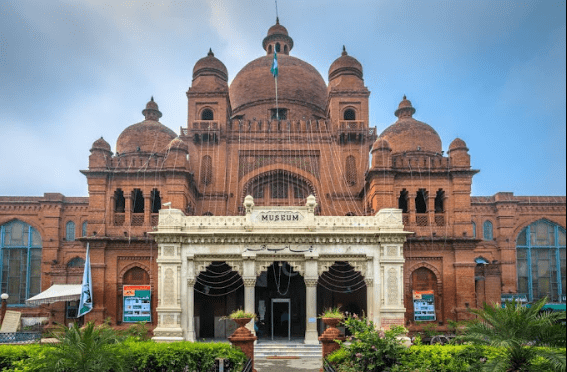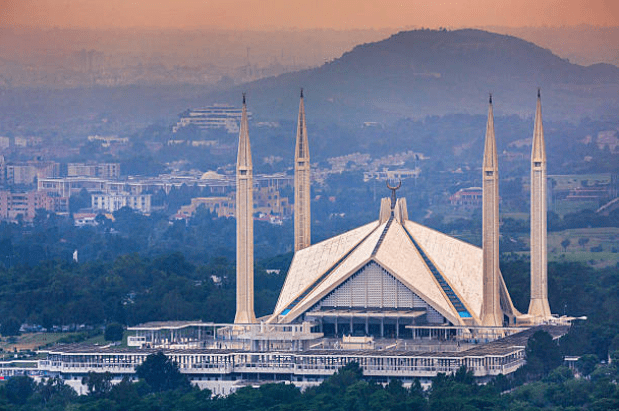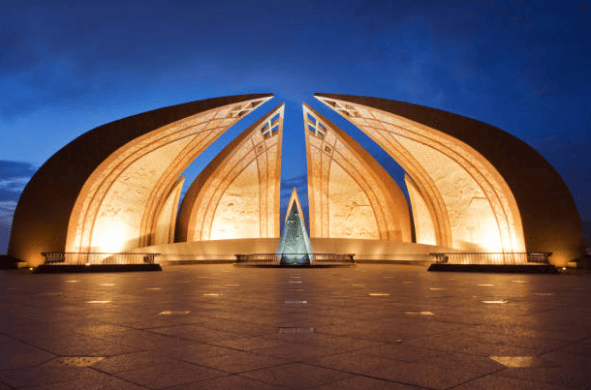Traveling in Pakistan? Is it possible? Absolutely! But before you go, read this to get a better idea. Since there isn’t much information available about tourism in this country, I’ve put together a list for you.

Islamabad
When you hear the name Pakistan, you might imagine a chaotic capital city. But don’t be mistaken—Islamabad is entirely different! The city is spacious, modern, and incredibly green. Pakistan deliberately moved its capital from the overcrowded Karachi to Islamabad, a city built specifically to serve as the administrative center, where government offices and embassies are located. Meanwhile, Karachi remains the financial capital and business hub. By the way, Islamabad means “City of Islam.” The Urdu word “abad” means “city,” so it’s common to find city names ending in “abad” in Pakistan, like Abbottabad and Eminabad.
Here are some must-visit places:
Faisal Mosque – Named after King Faisal of Saudi Arabia, who funded its construction, this mosque has a unique architecture that resembles a Bedouin tent rather than the typical dome shape. It can accommodate 10,000 worshippers and was the largest mosque in the world until 1993. Its grand white structure on a hill makes it a prominent landmark of Islamabad.

Pakistan Monument – This is Pakistan’s equivalent of the National Monument, but instead of a tower, it’s shaped like four giant flower petals representing Pakistan’s four provinces. Because of its elevated location, the reddish monument can be seen from all around the city. In the same complex, there’s an impressive museum that illustrates the history of Pakistan’s formation. A stroll around the Shakarparian Park is also pleasant, offering views of the city from the hill.

Lok Virsa Museum – Pakistan’s diverse cultures are beautifully displayed in this extensive ethnology museum. It’s fascinating to see the vibrant traditional costumes, folk tales that often revolve around forbidden love stories, and even in an Islamic country, the empowerment of women is well-represented, with a special exhibit on the achievements of Pakistani women, from singers to Everest climbers.
Taxila – About an hour from Islamabad, this site is an archaeological treasure. The ruins date back to the 6th century BC, earning it a place on the UNESCO World Heritage list. The ancient city is mentioned in the Mahabharata and Ramayana as a beautiful city founded by Bharata. In Buddhist texts, it’s noted that Taxila was the capital of the Gandhara Kingdom. Here lies the world’s oldest university, where Buddhist teachings were imparted in the 1st century. Even Thomas, a disciple of Jesus, once preached here.

Lahore
Lahore, the capital of Punjab province, is often referred to as the cultural capital of Pakistan, possibly because it boasts three UNESCO World Heritage Sites. It might also be because of its delicious cuisine or its stylish people. The city is a bit chaotic, but its many British colonial buildings give it a certain charm. Lahore was under the Mughal Empire during the 16th-18th centuries, and their architectural legacy can be seen in the Walled City.
Here are some highlights:
Lahore Fort – This massive fort complex spans over 20 hectares and contains 21 buildings. The most breathtaking is the Sheesh Mahal or “Palace of Mirrors,” built by Shah Jahan in the 16th century for his beloved wife Mumtaz Mahal. Shah Jahan also built the Taj Mahal as her tomb—remember? If her tomb is that beautiful, imagine their palace! The walls are made of marble, decorated with tiny mirrors that reach up to the ceiling. Nearby is the Naulakha Pavilion, her summer house with marble walls adorned with precious stones. Other notable structures include the Alamgiri Gate and the Moti Masjid.

Lahore Museum – Housed in a red building with Indo-Mughal architecture built in 1865, this museum is famous for its collection of Buddhist art from the Indo-Greek and Gandhara periods. The most sought-after statue by visitors is The Fasting Buddha, crafted in the 2nd century BC. Interestingly, the father of Rudyard Kipling, the famous British author, was the museum’s first curator.
Wagah Border – Every evening around 5 PM, crowds gather at the Pakistan-India border to witness the flag-lowering ceremony—a must-see spectacle! On the Pakistani side, hundreds of people sit on tiered seats, while on the Indian side, about 3,000 people sit in a half-stadium. The ceremony begins with Pakistani soldiers, all nearly two meters tall, marching with high kicks, while the crowd chants, “Allahu Akbar! Pakistan Zindabad!” The soldiers meet their Indian counterparts at the border gate to lower the flags together. It’s both amusing and thrilling to watch the rivalry and unity of these two nations!
Khewra Salt Mine – A three-hour drive from Lahore brings you to one of the world’s largest salt mines. This is where the trendy “Himalayan Salt” comes from. The pink salt is mined from deep underground, reaching seven levels below. Visitors must take a train ride into the dark mine. The view inside is stunning, with some stones carved and illuminated from within. The mine also has rooms for asthma treatment, as it’s believed that inhaling the salt air can cure the condition. Interestingly, locals don’t use this salt for anything other than decorative lamps. The salt is exported to developed countries, where it’s packaged attractively, marketed as healthier than regular salt, and sold at a high price. Yet, there’s no scientific proof that mined salt is healthier. It’s even more disheartening when you see the old miners struggling to carry the heavy rocks.

Katas Raj Temples – Not far from Khewra, you’ll find Hindu temples mentioned in the Mahabharata, where the Pandavas once stayed during their exile. The water in the sacred pond here is believed to have originated from the tears of Shiva, who wept when his wife, Sati, passed away.
